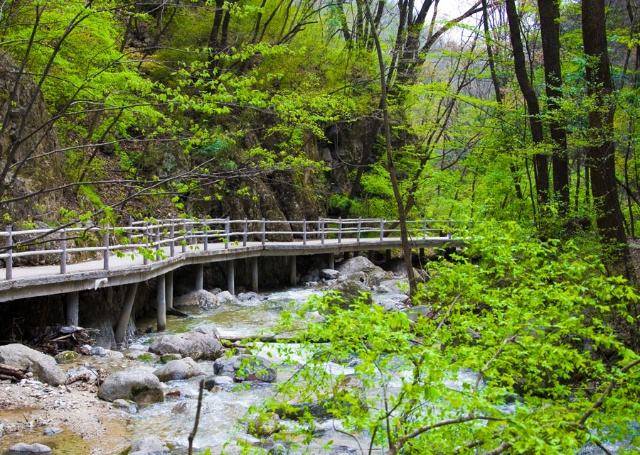Niubeiliang National Forest Park
Niubeiliang is located in the eastern section of the Qinling Mountains. It is the only national nature reserve in China that primarily protects the national first-class protected animal, the Takin, and its habitat. It is just an hour's drive from Xi'an.
Yinghu Town
Yinghu Lake is the largest freshwater lake in the five northwestern provinces. Known as the 'Fairyland of Qinba' with its clear waters and blue skies, it is often referred to as the 'Thousand Island Lake of Shaanxi.' It is approximately a two-hour drive from Xi'an.
Sima Qian Temple
Walking on the uneven stone path, looking at the front gate full of historical marks, gazing up at the thousand-year-old cypress in the courtyard, strolling along the ancient brick road of the historian, it feels as if you have traveled through a thousand years of time. Reflecting on the past and comparing it to the present, one cannot help but feel a myriad of emotions in Han Cheng, a city full of stories. Located by the Yellow River, it has a strong scholarly atmosphere, making it a perfect resting place with a rich sense of history.
Fengyan Ancient Terraces
These ancient terraces, hidden for hundreds of years, are truly beautiful in the morning. The crowing of roosters in the village echoes one after another. From the misty morning, the rapeseed flowers, which have grown in this yellow-brown fertile soil for centuries, gradually bloom, with their yellow stamens swaying in the morning breeze. This place is also known for producing selenium-rich tea. Watching the sunrise and sea of clouds in the morning is fantastic. When the sun rises, the entire terrace is bathed in bright sunlight.
Shaanxi Liping National Forest Park
Known as the Jiuzhaigou of Shaanxi, Liping is applying for World Natural Heritage status and continues to excavate the 'Chinese Dragon Mountain', which is the legendary Danxia landform. Additionally, it will feature the Hongchen Gorge and Underwater Stone City scenic areas, which are expected to astonish the world just like the Terracotta Warriors did! Breathing in the air rich in negative oxygen ions will make you feel fantastic.
Zibaishan National Forest Park
The mountain is named Zibaishan because of the many ancient purple cypress trees on it. The top of Zibaishan is relatively flat, resembling the grasslands of Mongolia, lush and verdant with flowing streams, creating an excellent landscape painting. The scenery of Zibaishan is rarely seen in the northwest, with the mountain covered in low shrubs, known as alpine meadows.
Huayang Ancient Town
Huayang Town dates back to the Qin and Jin dynasties and was once a famous ancient post station on the Tangluo Ancient Road. The towering archways, mottled city walls, deep alleys, and Ming and Qing dynasty residences in the town make it a Qinling ancient town with the halo of Lijiang Ancient City. It was also a filming location for 'Mancang Jincheng' in Xi'an.
The Mu Us Desert is one of the four major sandy lands in China. 'Mu Us' is Mongolian for 'bad water.' In ancient times, this area was lush with water and grass. However, due to climate changes and wars, the vegetation was destroyed. Since the Qing Dynasty, this area has become a vast desert.
Jiang Family Manor
Jiang Family Manor was built during the Guangxu period of the Qing Dynasty and took 13 years to complete. It was the private residence of Jiang Yaozu, a wealthy landowner in northern Shaanxi. It is the highest grade cave courtyard in Shaanxi and the largest castle-style cave manor in China. It is also one of the architectural treasures of the Han nationality.
Dihua Ancient Town
Dihua Ancient Town is the real-life setting of Jia Pingwa's novel 'Qinqiang'. Qingfeng Old Street is located here. In the Tang Dynasty, Bai Juyi wrote a famous line here: 'From afar, I hear the dream of brothers traveling, it must be because of the post pavilion named Dihua'. This place embodies the gentle and graceful culture of the pre-Qin period, the reserved and introverted nature of the Song Dynasty Han people, and the bold and unrestrained spirit of the Jin nomadic people. It is a cultural memory deep in the Qinling Mountains.























